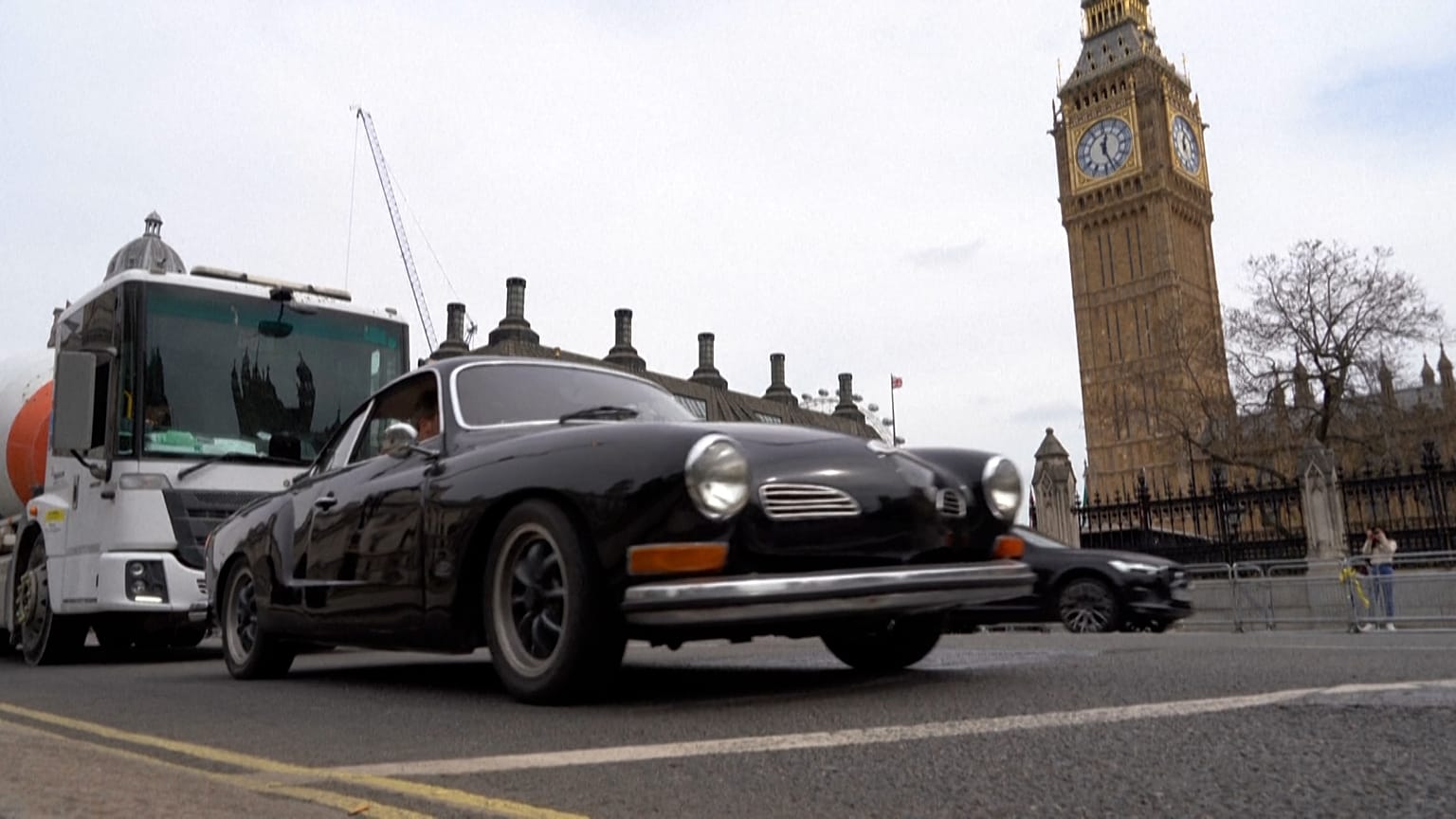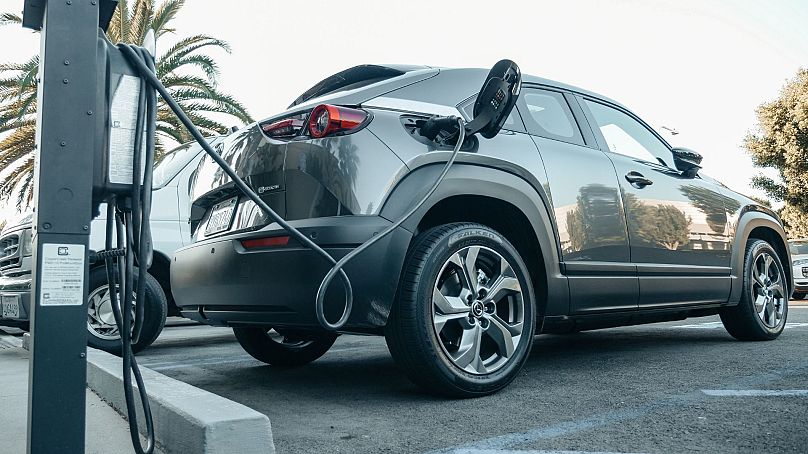It can be difficult to know what the most environmentally friendly car option is, so we asked an expert for advice.
It can be difficult to know what the most environmentally friendly car option is. Is it best to keep your current vehicle until it dies, buy a new electric car or convert your car to electric or hybrid?
Low-emissions zones and a potential combustion engine ban are forcing car owners in the UK and EU to consider greener modes of transport.
With passenger cars emitting as much as 3.2 metric tons of CO2 a year globally, and the temperature rise creeping ever closer to the 1.5C limit, there’s no doubt we need to decarbonise the way we travel.
But how we achieve this is still up for debate.
How much CO2 does it take to manufacture an EV?
With 250 million cars currently on Europe’s roads - the majority of which are fossil fuel powered - scrapping older vehicles might not be the answer.
“We need to think much more holistically about how these vehicles affect the environment, not just fixate on a tailpipe and eliminating that,” says Nick Molden, founder and chief executive of Emissions Analytics, a company that analyses the environmental impact of vehicles.
One of the major distinctions between the CO2 emissions (CO2e) of producing an EV and a combustion engine car is the battery.
“For an electric car, [it takes around] about eight to 10 tonnes of manufacturing emissions to produce [an 80 kilowatt hour] battery,” says Nick.
This takes into account materials mined and refined in China, where coal is still a major energy source. As the world shifts to renewable energy, this figure will drop.
Once on the road, however, battery-powered EVs are emissions-free - unlike combustion engine cars.
“An average car in the UK… like a Nissan Qashqai or a Ford Kuga… will emit [roughly] two to three tonnes of CO2 per year, from an average driver driving about 15,000 kilometres per year,” Nick continues.
Based on these numbers, you would need to drive your EV for roughly four years to balance out the emissions of a combustion car.
But these carbon-heavy batteries don’t last forever - most only come with an eight-year warranty. Typically though, they need to be replaced every 10 to 20 years.
Batteries need to last “well, well, well beyond break even” to give significant CO2 reductions, says Nick.
“Really, they need to get to about 14 years, which is the average life expectancy of a typical vehicle,” he continues.
“If they achieve that in practice, then they are going to be delivering significant life cycle reductions in CO2.”
What other hurdles do EVs face?
Range anxiety, cost and limited charging infrastructure are just some of the hurdles giving people pause for thought on EVs. But there’s another underlying issue that’s less talked about.
Due to their large battery packs, EVs are around 400 to 500 kg heavier than combustion engine cars. This needs to be accounted for in their design.
“You have to put much bigger, specially designed tyres on those vehicles, which typically will wear faster,” explains Nick.
Tyres are highly polluting to manufacture and release particulates as they wear down. One toxic chemical released from tyres - 6PPD-quinone - has even been identified as the cause of mass salmon die-offs in the rivers of Washington state in the US.
“Tyres are made essentially, and perhaps ironically, with fossil fuels from oil…So you've got a lot of the same pollutants that you would have found in a tailpipe, in tyres as well,” says Nick.
It’s just another example that shows how complex determining the overall environmental impact of EVs can be.
Is it worth converting gas-powered cars to electric?
In the UK alone, there are 33 million cars on the road.
“I don't think anyone has any doubt now that we are moving to a decarbonised society, which begs the question: what is going to happen to all those cars?” says Matthew Quitter, founder of London Electric Cars.
His company converts combustion engine vehicles into EVs - a process that, while possible, costs far too much for most people to consider it.
“It's expensive,” says Matthew. “Our base conversion costs around £20,000 [€23,000]. And that really is not what I would call affordable.”
This approach does slash manufacturing emissions to a point, but it requires major changes in the suspension and tyres to ensure a smooth ride with the heavy weight of the battery.
For wealthy drivers keen to keep their classic cars on the road, this is an appealing option. But the time-consuming, complex and expensive process means it’s unlikely to become mainstream.
“I can see that it can work for classic cars or niche cars where it's a hobby, a labour of love,” says Nick.
“But would you upgrade your six-year-old Nissan QASHQAI to make it a battery electric vehicle? My tip would be to save yourself a lot of time, hassle and money and just go and buy a new car.”
Are hybrid cars a good solution?
Hybrid cars, which combine petrol tanks with electric batteries, are contentious.
Greenpeace UK has gone so far as to call plug-in hybrid vehicles the “car industry’s wolf in sheep’s clothing.”
Following these claims, official testing confirmed that these vehicles have much higher emission rates than manufacturers claim.
In the UK and EU, the sale of new hybrid cars will be banned in 2035. That still arguably gives drivers long enough to get their money’s worth out of the vehicle - particularly since they are cheaper than EVs.
They also avoid some of the current problems with EVs. Non-plug-in hybrids have smaller batteries, meaning they are “not much heavier than a standard vehicle”, says Nick. They do not rely on charging infrastructure. And despite having limited electric driving range, they are still greener than combustion engine cars.
But for those who can afford it, switching straight to an EV is a more environmentally friendly choice than plugging the gap with a hybrid.
How else can we become greener drivers?
Changing our driving habits have as much impact as changing our cars.
In a perfect, carbon-free world, we’d all ditch private vehicles and walk, cycle or take the train. But this is unlikely to happen - especially in rural areas where public transport isn’t widely available.
One way we can slash emissions, however, is by opting not to take unnecessary car journeys.
“Consider eliminating a few of the journeys that actually add no value to you,” says Nick.
“If we could reduce the number of journeys by five to 10 per cent, that itself would make a significant dent.”
Governments have a role to play in this. Providing incentives to take public transport - such as discounted tickets or improved services - and taxing drivers more heavily for fuel and pollution could all encourage people to think twice before hitting the roads.
Watch the video above to learn more about which kind of car you should choose.



















